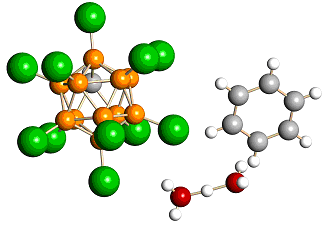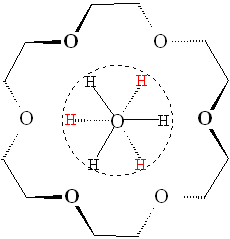|
We are particularly interested in short, strong, low-barrier H-bonding where the proton resides in a nearly flat-bottomed, double-well potential such that its position becomes essentially indeterminate within an interval between the O····O bond.
O ···· | ? H + ? | ···· O
Unlike a typical, unsymmetrical O-H···O hydrogen bond, there is a symmetrical distribution of the proton within this interval and nuclear motion is faster than the IR timescale. The consequences for IR spectroscopy are dramatic and distinctive. Instead of n OH 3000±500 cm -1 as seen with typical H-bonded O-H···L groups, n as OHO moves to very low energy (ca. 1000 cm -1 ). Moreover, this n as OHO stretching vibration is believed to have lower energy than the associated bending vibrations. refs This contradicts the norm of IR spectroscopy where stretching vibrations always have higher frequencies than the associated bends. In addition, an unusual broadening, diminishment and even disappearance of IR bands associated with the OH + O unit, e.g. n as (C-O-C) in the diethylether (Et 2 O) 2 H + disolvate, may occur. This phenomenon is poorly understood.

Short, strong, low-barrier H-bonds are found in proton disolvates
such H(Et 2 O) 2 + . See Stasko et al. J. Am. Chem. Soc. 2002 , 124 , 13869 .

The prototypical short, strong, low-barrier H-bond is
found in the H 5 O 2 + ion. See Stoyanov J. Phys. Chem. A 2006,110, 12292-13002..
Other H-bonding papers of interest:

"Unexpected IR Characteristics of Hydrogen Bonds in the 18-Crown-6-Ether Complex of the H 3 O + Hydronium Ion. Can the Location of the Protons be Specified?" E. S. Stoyanov, C. A. Reed, J. Phys. Chem. A., 2004 , 108 , 907-913 .

"A Strong Acid that does not Protonate Water"
Stoyanov, E. S., Kim, K.-C., Reed, C. A. J. Phys. Chem. A, 2004 , 108, 9310-9315 .
[back to projects]
|